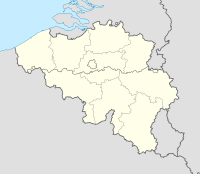Battle of Gembloux (1940)
| Battle of Gembloux | |||||||
|---|---|---|---|---|---|---|---|
| Part of the Battle of Belgium, Western Front of World War II | |||||||
 The Gembloux Gap. The Belgian central plain between Namur and Wavre was occupied by the French Corps de Cavalerie (Général René Prioux), to prevent a German breakthrough into France. |
|||||||
|
|||||||
| Belligerents | |||||||
|
|
|||||||
| Commanders and leaders | |||||||
|
|
|
||||||
| Strength | |||||||
| 3 motorised divisions 3 infantry divisions |
2 panzer divisions 3 infantry divisions |
||||||
| Casualties and losses | |||||||
| AFV unknown ~ 2,000 killed, wounded and missing /III Corps; a few hundred casualties |
unclear 33–37 percent of German tank strength lost 304 killed 413 wounded 29 missing IV Corps, a few hundred casualties. |
||||||
|
|
|||||||
The Battle of Gembloux (or Battle of the Gembloux Gap) was fought between French and German forces in May 1940. during the Second World War. On 10 May 1940, The Nazi German Wehrmacht (Defence Force), invaded Luxembourg, The Netherlands and Belgium under the operational plan Fall Gelb (Case Yellow). Allied armies responded with the Dyle Plan (Breda variant), intended to halt the Germans in Belgium, believing it to be the main German thrust. The Allies committed their best and most mobile to an advance into Belgium on 10 May and on 12 May, the Germans began the second part of Fall Gelb, the Manstein Plan an advance through the Ardennes, to reach the English Channel and cut off the Allied forces in Belgium.
Unaware that the German invasion of the Low Countries was a decoy, the French Army intended to halt the German advance into central Belgium and France on two defensive positions at the towns of Hannut and Gembloux. The French First Army, the most powerful Allied army, was to defend the Gembloux–Wavre axis. The French Corps de Cavalerie (Général René Prioux), advanced to Hannut, to screen the deployment of the rest of the First Army at Gembloux, by delaying a German advance.
...
Wikipedia

